“Their first lease was at Port Stephens near Newcastle,” says Brandon. “Back then, they would bring bundles of black mangrove sticks down from Ballina and use these to catch the wild oysters. They would lay them down in racks and pick the oysters off by hand.”
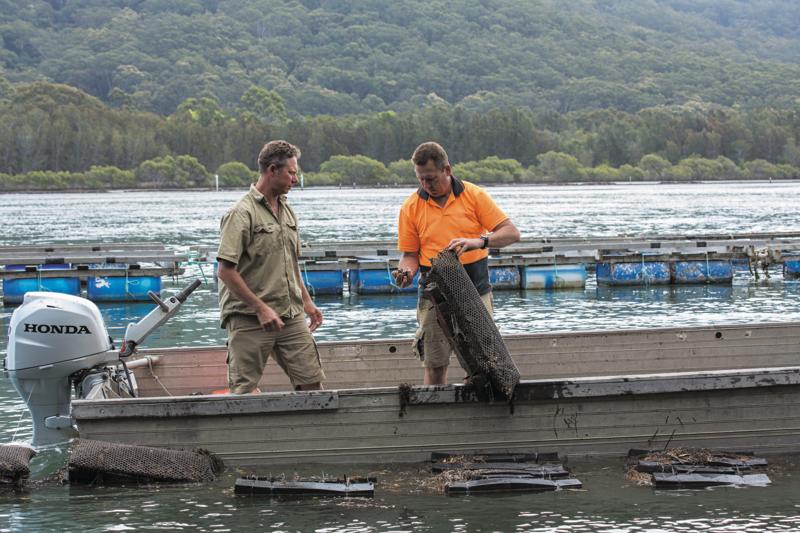 Jason and Brandon inspect floating bags of oysters for sizing and quality control.
Jason and Brandon inspect floating bags of oysters for sizing and quality control.
Sydney Rock Oysters: the big players in Port Stephens
The Armstrongs went on to become one of the bigger players in Port Stephens. Then, in the 1980s, when Pacific Oysters arrived in NSW waters, it was game over for almost everyone. Pacific Oysters – endemic to Japan, but introduced to other parts of Australia – have very high rates of growth and reproduction, and when they started taking over habitats in NSW, the native species couldn’t compete.
“Most of the production of Sydney Rock Oysters was coming from Port Stephens then, but the sudden introduction of Pacific Oysters pretty much wiped out that whole industry,” says Brandon. “Luckily Dad had the foresight to start buying leases in the Camden Haven, and that was lucky because it gave them the opportunity to get out during a devastating time.”
When the Pacific Oysters arrived, the invaders literally grew on top of the Sydney Rock Oysters that were already in the estuaries, creating a daunting job for the farmers. “A lot of them had to walk away,” says Brandon. “Those that didn’t struggled to knock the Pacific Oysters off the Sydney Rock Oysters by hand, which was a labour-intensive and heartbreaking job.”
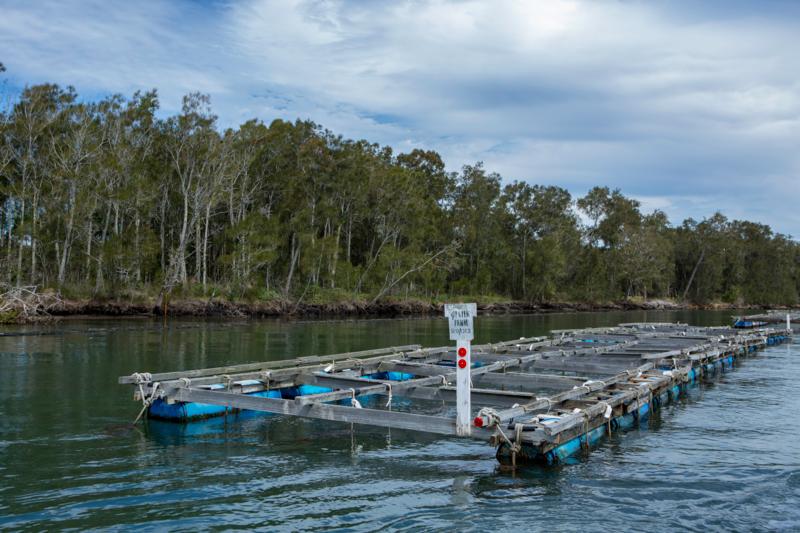 One of the floating pontoons at the Armstrongs’ farm.
One of the floating pontoons at the Armstrongs’ farm.
Rob and Jenny went from owning 10 oyster leases in Port Stephens worth hundreds of thousands of dollars, to selling them so cheaply they were virtually giving them away.
Today, Pacific Oysters are so well established in the Port Stephens area that the NSW Department of Primary Industries allows their cultivation, recognising that they are now a thriving industry. (Elsewhere in NSW, Pacific Oysters are listed as a Class 2 Noxious Fish, and a permit is required to grow and sell them.)
Rob and Jenny, too, thrived when they started growing Sydney Rock Oysters again from scratch on the Camden Haven. When Brandon and Jason took over Armstrong Oysters 15 years ago, their dad was able to retire.
Innovative oyster farming for sustainable results
Today, Armstrong Oysters produces close to 6 million premium, restaurant-quality oysters every year. The company has changed its methods, employed more workers and invested in the latest equipment and technology, including an online farm management system called SmartOysters. Over the past three years the brothers have grown the business by more than 100%.
“It’s a far cry from the old mangrove stick method,” says Brandon. “Now we use a plastic catching slat made from PVC pipe about 1m long. The oysters nestle under the thin plastic strip and they catch. After about six months we bring the slats in and we twist and bend them until the baby oysters just flick off.” They can then be moved to growing areas.
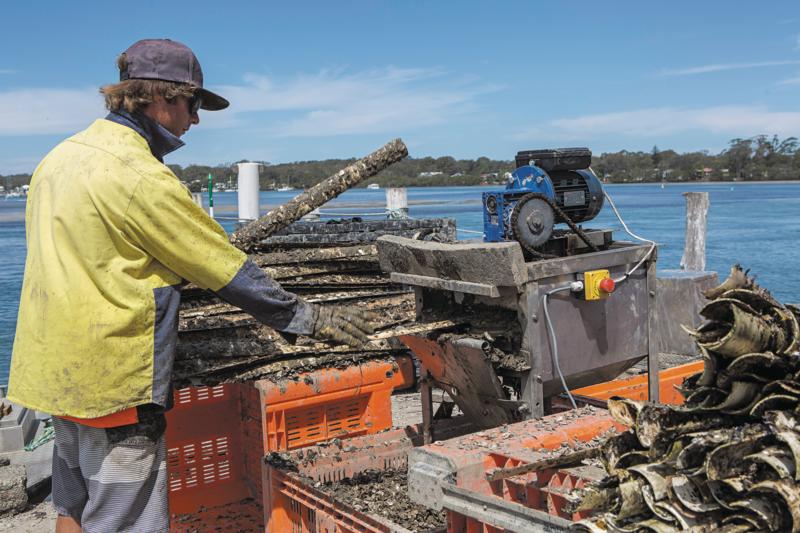 Oyster hand Jarrod Jones strips baby oysters off the plastic slats.
Oyster hand Jarrod Jones strips baby oysters off the plastic slats.
Known as single-seed farming, it’s the method most oyster farmers are now adapting to. Not only is the reusable plastic infrastructure more environmentally friendly than the old creosote-treated posts, it is visibly appealing too, which matters at a time when the industry needs to be seen to be lifting its game.
Environment related articles:
-
Native vegetation: taming African lovegrass
-
Industrious beekeepers nurture thriving family business
-
A thorny fight to stop the Hudson pear invasive species
-
Herpes virus to solve carp problem
“We are open to the public, so people can see what we do here on these prime stretches of water on the NSW coast. It’s all about image, origin and flavour,” says Brandon.
Similar to wine, oyster flavours differ depending on where they are from. Oyster connoisseurs learn to taste the difference. “That’s where the biggest shift has been, and restaurants are taking it on board, which is great,” says Brandon.
“When people come to visit our farm and we give them an oyster straight out of the water, it’s an experience they’ll never forget. That’s why we’re always trying to do it better.”
In 2015, the brothers teamed up with seafood sales and marketing agency Blue Harvest. With staff on the ground in Brisbane, Sydney, Canberra and Melbourne, the agency works with more than 30 oyster farms, helping them to share their ideas and experiences and market their oysters under one umbrella.
“The days when oyster farmers kept to themselves and didn’t share knowledge with each other are well and truly over,” says Brandon. “We’re out there getting in people’s faces, sharing ideas and experiences, and encouraging people to grow their businesses and change the industry for the better.”
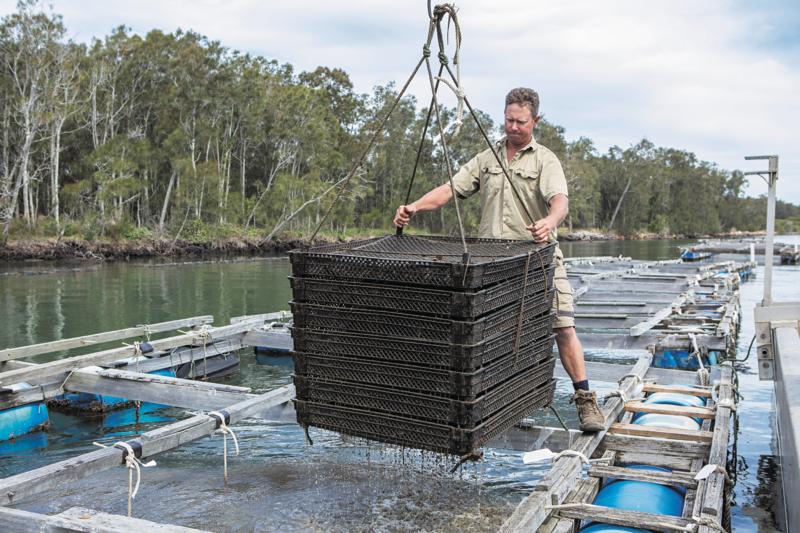 Brandon at work on the floating pontoon.
Brandon at work on the floating pontoon.
Passing oyster farming down the generations
Having worked on the river since the 1960s, the family is now looking to the next generation to keep the dream alive. Brandon’s wife Katrina, and Jason’s wife Kristy, are both hands-on in the business. Brandon and Katrina’s sons Bailey, 20, and Flynn, 19, are the third generation learning the ropes. “They’re both studying now but they’ll be ready to jump in and take farm management to another level one day,” says Brandon.
His daughters, Summah, 15, and Liv, 10, love growing up on the river and may also play a role in the future, while Jason and Kristy’s daughter Layla and son Riley are already passionate about oyster farming at the tender ages of 11 and 12.
“Although Dad has officially retired, he’s never really left the farm,” says Brandon. “It’s still where his heart is. He’s proud of the way things have turned out and he’s seen so many changes in his time. It’s great to still have him alongside us because he brings us all back to reality.”
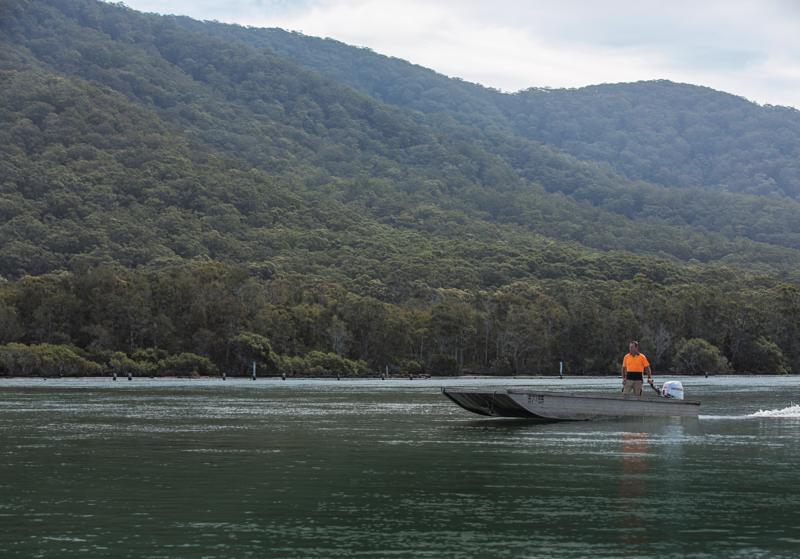 FIFTY YEARS ON THE RIVER
FIFTY YEARS ON THE RIVER
1960s
The couple bought their first oyster lease at Port Stephens in the Hunter region with a $500 loan.
1972
Pacific Oysters arrived, taking over native oyster habitats. The Armstrongs sold their leases at a loss and started again on the Camden Haven River.
1980s
Rob and Jenny retired and sons Brandon and Jason took over Armstrong Oysters.
2003
The brothers joined sales and marketing agency Blue Harvest.
2015
They switched to the Australian agtech initiative SmartOysters to manage the farm more effectively.
2017
Armstrong Oysters is now one of the biggest producers of Sydney Rock Oysters in Australia.
NSW Farmers lobbying state government to save oyster industry
Breeding programs to produce disease-resistant strains are key to one of the biggest problems faced by the state’s oyster farmers.
NSW Farmers is calling on the NSW government to further fund the Select Oyster Company (SOCo) to ensure the longevity of the Sydney Rock Oyster industry.
SOCo is a group of oyster growers and scientists who advise and collaborate with the Department of Primary Industries (DPI) and the CSIRO on a breeding program for Sydney Rock Oysters. SOCo is administered by NSW Farmers. There have been early indications the government will continue with its funding of SOCo, but this still needs to be confirmed, so the Association is increasing the pressure in the lead-up to the state election.
NSW Farmers’ chief economist Ash Salardini says the Sydney Rock Oyster industry has the potential to be worth $120 million a year.
“It is one of the few products immediately associated with quality and its provenance story makes it an ideal candidate for fresh exports, once the Western Sydney Airport is operational,” he says.
“The fact Sydney forms part of the name cannot be underestimated when marketing it in Asian and Middle Eastern markets. It is part of Sydney’s food story and its provenance can ensure premium prices in international markets. In the past two decades the industry has been decimated by disease and subsequent supply issues, and the market has shrunk to $40 million per year.”
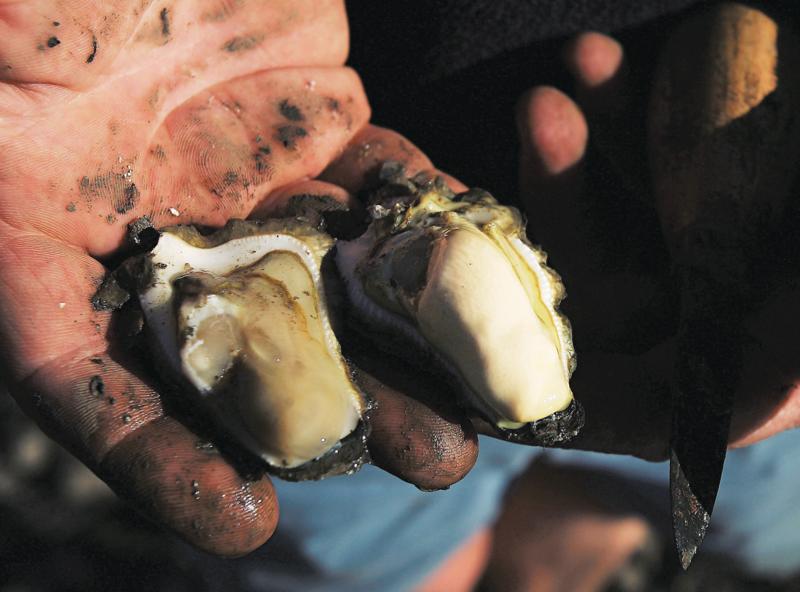 An oyster blighted by QX disease, to the left, is held next to a healthy Sydney Rock Oyster, to the right. Source: Getty Images.
An oyster blighted by QX disease, to the left, is held next to a healthy Sydney Rock Oyster, to the right. Source: Getty Images.
“The genetic work by SOCo is a must to ensure disease resistance and quality, and to avoid mistakes of the past. NSW Farmers wants long-term government funding secured and finalised by the time the state election is completed.”
QX outbreak killing oysters and affecting livelihoods
Jane Clout, chair of the SOCo board, explains more about the problems NSW oyster growers are facing.
“Sydney Rock Oysters are susceptible to a disease called QX, which is actually a parasite that occupies the gut of the oyster, stealing its food and eventually killing it,” she says.
QX only affects Sydney Rock Oysters and is harmless to humans. It occurs seasonally, usually between January and April, and the diseased oysters begin to lose their condition and die through autumn and winter. First diagnosed in Sydney’s Georges River in 1994, a QX outbreak swept through the Hawkesbury River in 2004, driving many oyster farmers out of the industry altogether.
“The concern is that we know QX exists in other estuaries,” says Jane. “It can lay dormant then ramp up if there is a change in water quality. In estuaries where it is endemic, the disease window is related to temperature.”
What is being done to combat QX disease?
The DPI, together with the Fisheries Research and Development Corporation and the NSW oyster industry, is developing families of Sydney Rock Oysters with resilience and improved growth rates, without losing other characteristics important to the marketplace.
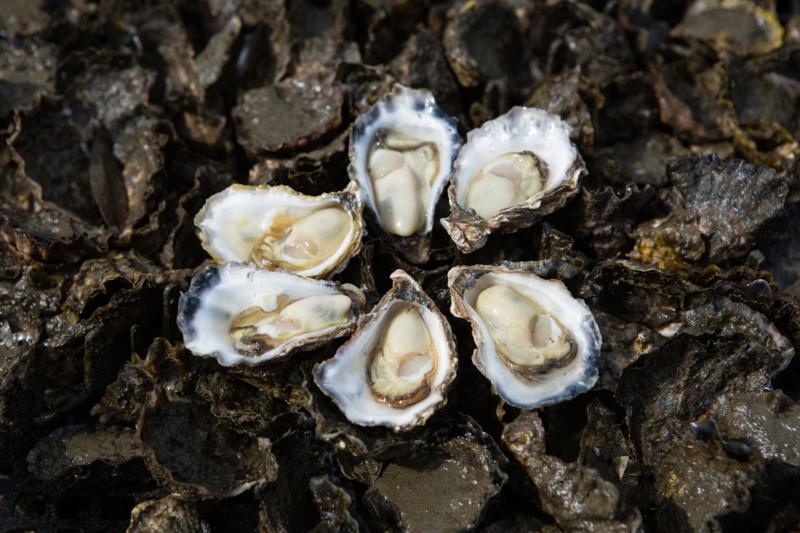 A group of healthy Sydney Rock Oysters from Armstrong Oysters.
A group of healthy Sydney Rock Oysters from Armstrong Oysters.
These families of oysters have been put in estuaries known to be susceptible to QX where they are continuously tested, measured and monitored.
“We monitor the different family lines of oysters and continue to run tests so we can then look at survival rates,” says Jane.
One family’s survival rate may prove to be poorer than another, but all are ranked, and oysters can then be reproduced from the strongest surviving families. “The continuous process of breeding these family lines year by year goes back to 2015,” says Jane. “We’re now breeding two and three generations and will continue to collect information as we go.”
Like Sydney Rock Oysters, Pacific Oysters are also vulnerable to disease. Growers in NSW, South Australia and Tasmania have all seen the devastating effects of Pacific Oyster Mortality Syndrome (POMS). While the disease doesn’t pose any threat to humans, it’s lethal to Pacific Oysters, killing them within hours and shutting down production on farms for 12-to-18 months.
“Hatchery production is a vital link in disseminating the benefits of breeding programs to industry,” says Jane.
“We can’t protect against POMS or QX, but we have a lot more control over certain characteristics of oyster stock, such as shell shape, rates of growth and disease resilience, so farmers who are hit with a disease outbreak have better outcomes.”